Bring the gifted garden indoors: How to care for your holiday gift plants.
December 16, 2014 | By webadmin
This holiday season, are you giving or receiving gifts of live plants such as cyclamen, topiary rosemary or even perennial hellebore? While some of these hostess gifts or table top decor may seem temporary, many can be kept as indoor plants long term; and some holiday plants you buy or receive may need to return to the outside garden more quickly. In case you’re not sure how to care for your holiday gifts plants, we’ve showcased a few of our favorites and how to care for them long term.
Cyclamen is one of our favorite annuals to plant in containers on the patio through winter. Cyclamen prefer our cooler fall and winter temperatures and so are often planted as cool season color; but they don’t fare well in our summer heat. The white blooms glows at dusk and can be seen from afar; while the pink, magenta and red flowers are some of the most festive blooms of the season.
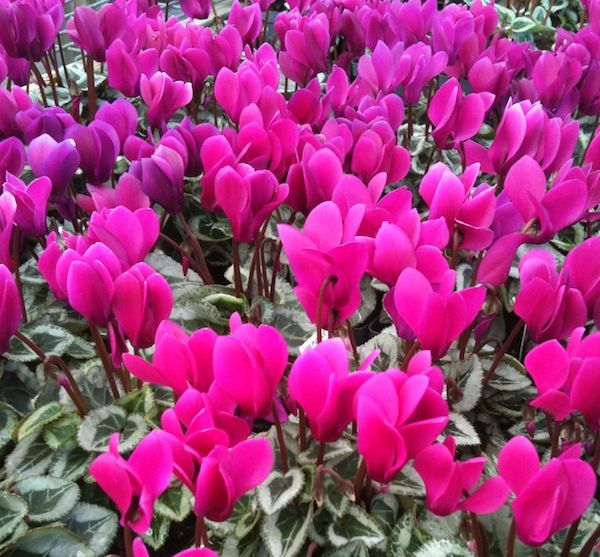
Cyclamen is also perfect for tabletop decor and make a wonderful hostess gift. Did you know that cyclamen actually make great houseplants? They can be kept indoors for extended periods of time. Cyclamen are often sold in 4- to 6-inch pots. While they can stay in these smaller pots for a bit, you’ll ultimately want to transplants them into a larger container to keep them as a houseplant. An 8-inch diameter container is adequate. Keep the soil moist but not soggy; it’s best to water cyclamen from below, using a water tray. In your home, cyclamen will appreciate cooler temperatures. So if you have a bright room that stays on the cool side, it will be perfect. Sometimes your cyclamen will go dormant as summer approaches. Once the foliage dies down, stop watering. In late-summer, start watering again to stimulate new fall growth.
Rosemary & Lavender Topiary
This time of year, topiaries of all kinds are popular hostess and holiday gifts. Rosemary and lavender both make wonderful topiary plants and offer welcome fragrance. They can be used in large patio containers to flank your entrance, or even used as small living Christmas trees. Neither plant, however, will fare well if left indoors for any length of time. You can keep your rosemary or lavender topiary inside for about a week, but any longer and plants will start to decline.
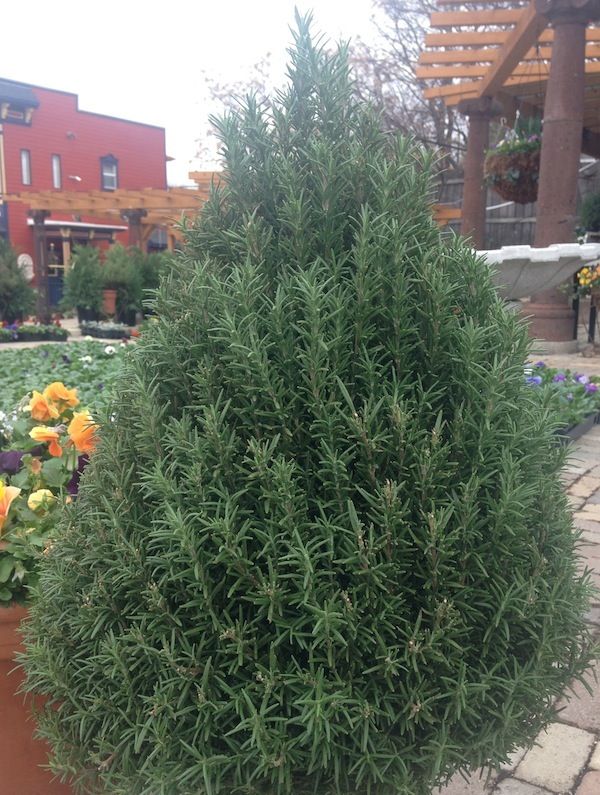
While you have them indoors, place them near a bright sunny window. Both of these herbs prefer to remain on the dry side, but don’t let them ever completely dry out. After you’ve enjoyed your topiary indoors for about a week, place outdoors, plant into a patio container or even the landscape.
Primrose
Delicate, colorful primrose offer up cheery winter blooms. You’ll often find them for sale at the garden center in fall and are typically planted in part sun locations or in patio containers. They pair perfectly with English ivy for a stately look. If you’re looking for something beyond the standard poinsettia as a gift plant, pick up a primrose and drop it in a decorative cachepot.
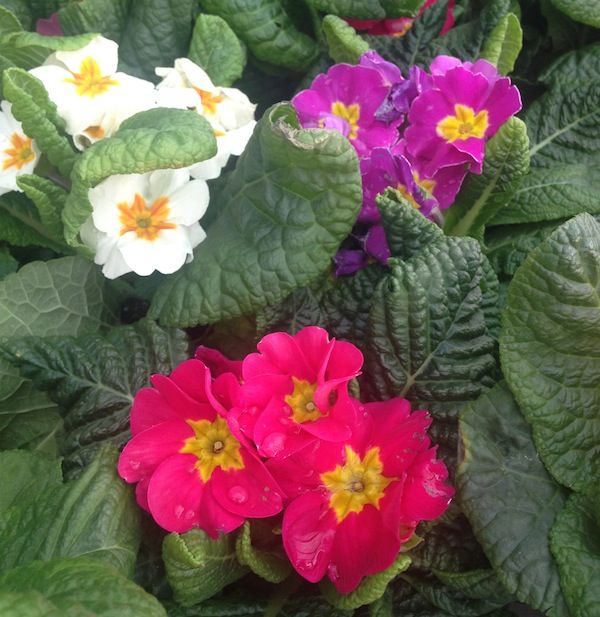
Primrose can be kept indoors as long as they are blooming, then plant outdoors. Just like cyclamen, primrose don’t fare well in our summer heat so don’t expect your landscape primrose to last beyond early summer. Or, you can choose to keep your primrose as an indoor houseplant. Note that it can often be difficult to get primrose to re-bloom indoors. You can set your primrose outside in early fall to encourage new buds. Be sure to place it near a bright window with lots of indirect light. Primrose are very susceptible to root rot so you’ll never want to let the soil get to get soggy.
Hellebore
Looking for a gift plant that nobody will expect? Impress the host of your next party with a blooming hellebore, also called Lenten rose. These tough evergreen perennials bloom through the winter holiday season and are stunning in the garden or as holiday gift plants. Hellebore are available in many flower colors including pure white, green, rose, purple and more.
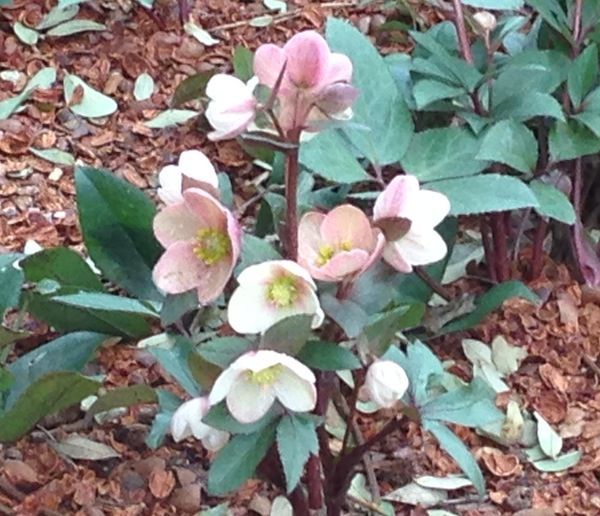
Hellebore can be kept indoors for several weeks but should then be planted outdoors in your garden. They prefer a shady spot in the landscape, or one with morning sun and afternoon shade in the summer. Because our winters are mild and these perennials are tough, you can plant them outside anytime during the winter.
English Ivy
We know you may love to fill shady areas of your landscape with stately English ivy, but did you know it makes a wonderful indoor plant as well? This time of year you’ll find ivy topiaries in many shapes and sizes that make perfect gift and hostess plants. You can keep them indoors as a houseplant, or plant outdoors in a shaded patio container. There are solid green or variegated varieties available. If you do plan to keep your English ivy as a house plant, be sure to place it in bright, indirect light. It also appreciates a little extra humidity, so bright bathrooms are the perfect spot.
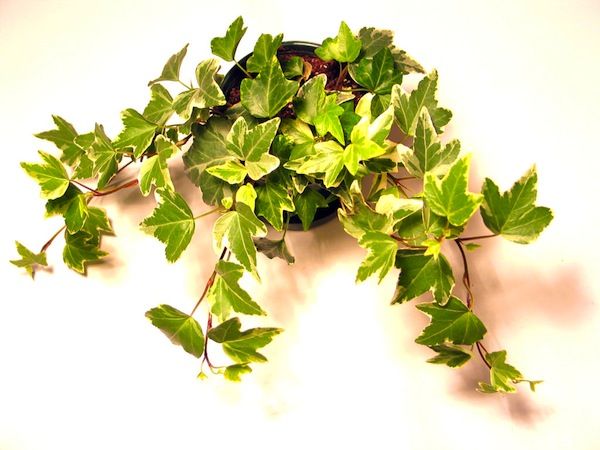
Water to keep the soil moist, but not soggy. Note that spider mites can be a problem on indoor English ivy that isn’t getting enough light or regular moisture.
We hope this winter you’ll bring your gifted garden indoors. When you’re ready to get back out in the garden, give us a call for a landscape refresh or spring clean up.
